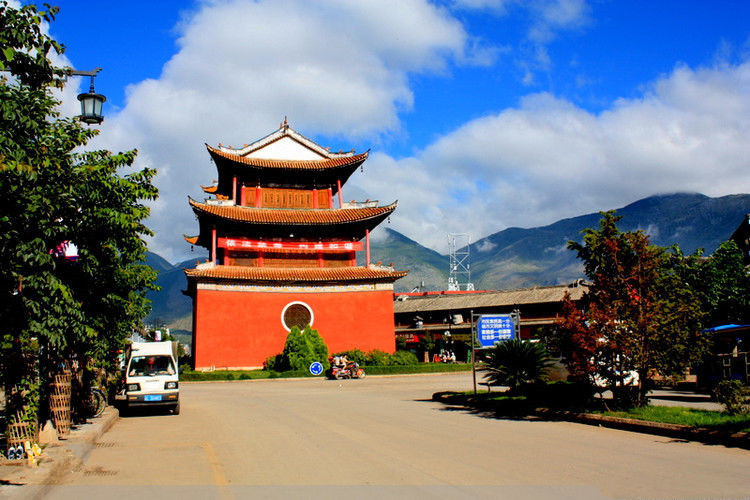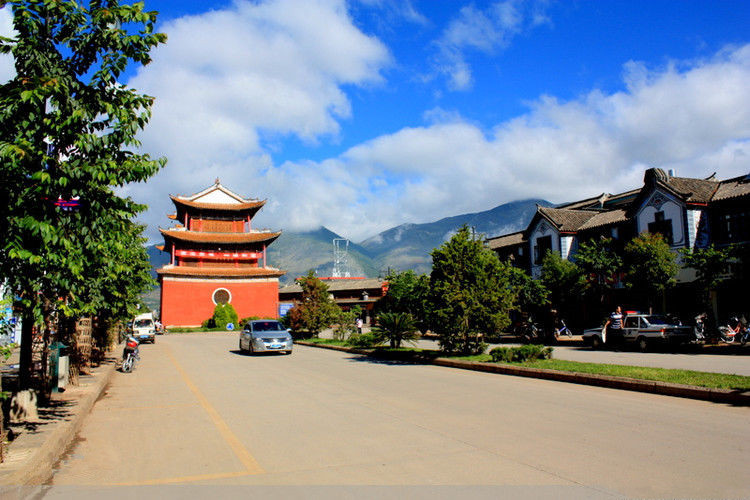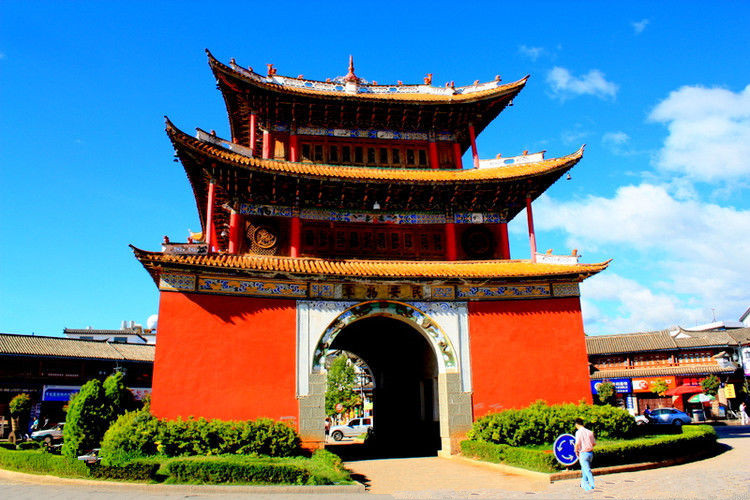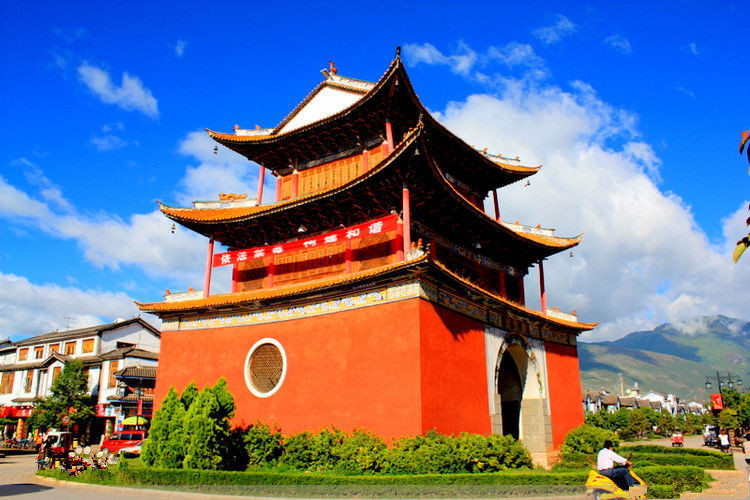
Yunhe Tower in Heqing County, Dali
Introduction
Yunhe Tower (云鹤楼) is located in the central part of Heqing County (鹤庆县), Dali Bai Autonomous Prefecture (大理白族自治州), Yunnan Province (云南省). Originally known as Anfeng Tower (安丰楼), it was built in the ninth year of the Zhengde era during the Ming Dynasty (明朝). Historical records indicate that it was destroyed in conflicts and underwent four reconstructions. After its fourth reconstruction in the twenty-seventh year of the Guangxu era (光绪二十七年), it was renamed “Yunhe Tower.”
- Chinese Name: 云鹤楼
- Location: 云南省大理白族自治州鹤庆县城
- Former Name: 安丰楼
- Established: 明朝正德九年
Overview
Yunhe Tower is a wooden structured pavilion-style building, four stories high, with a height of 30 meters, an east-west length of 18.6 meters, and a north-south width of 14 meters. The archway passage is 16 meters long, surrounded by eaves and columns. The interior features intersecting dougong brackets, constructed without a single nail, showcasing high architectural craftsmanship.
Historical Background
Yunhe Tower is situated at the center of Heqing County, standing across a street. It was initially constructed in the ninth year of the Zhengde era (1514). After being destroyed in warfare, it was reconstructed in the fifty-first year of the Kangxi era (1712) by Tong Zhen, the local magistrate. During this reconstruction, bells and drums were installed, earning it the nickname “Belfry.” It was rebuilt again in the fifteenth year of the Daoguang era (1835) and subsequently in the twenty-seventh year of the Guangxu era (1901), when it was renamed “Yunhe Tower.”
Architectural Details
Yunhe Tower features a brick-built city gate, topped with a wooden structure. The tower stands 19.4 meters tall, 18.6 meters wide, and 16 meters long. The lower gate passage is 16.7 meters long. The outer structure has three tiers of eaves, while the interior has four floors. The main columns are massive and straight, supporting the building from top to bottom without the use of nails. The topmost floor enshrines a statue of the Jade Emperor, with the middle tier dedicated to the “Three Stars” and accompanied by bells and drums.
Cultural Significance
The name “Heqing” (鹤庆) is related to local legends about cranes. It is said that the Heqing Basin was once a highland lake where flocks of white cranes gathered. The Bai language refers to Heqing as “Aokai,” meaning “double cranes.” The area has historical significance as a gateway between Dali and Lijiang.
Travel Information
Yunhe Tower is easily accessible from several transportation hubs:
- Train Station: Heqing Train Station (鹤庆火车站)
- Bus Station: Heqing Long-Distance Bus Station (鹤庆长途汽车站)
- Airports: Lijiang Airport (丽江机场), and via the Lijiang Airport Expressway (丽江机场高速路)
Nearby Attractions
- Heqing Xinhua Bai Ethnic Tourism Village (鹤庆新华白族旅游村)
- Caohai Wetland (草海湿地)
- Wildman Valley (野人谷)
- Black Dragon Pool (黑龙潭)
- Shiba Mountain (鹤庆石宝山)
Travel Tips
- Visit during the early morning or late afternoon to avoid crowds and enjoy the views.
- Bring a camera to capture the intricate architectural details and scenic surroundings.
- Check local events or festivals that may enhance your visit to the tower and surrounding areas.





 7 Days GolfingTour
7 Days GolfingTour
 8 Days Group Tour
8 Days Group Tour
 8 Days Yunnan Tour
8 Days Yunnan Tour
 7 Days Shangri La Hiking
7 Days Shangri La Hiking
 11 Days Yunnan Tour
11 Days Yunnan Tour
 6 Days Yuanyang Terraces
6 Days Yuanyang Terraces
 11 Days Yunnan Tour
11 Days Yunnan Tour
 8 Days South Yunnan
8 Days South Yunnan
 7 Days Tea Tour
7 Days Tea Tour
 8 Days Muslim Tour
8 Days Muslim Tour
 12 Days Self-Driving
12 Days Self-Driving
 4 Days Haba Climbing
4 Days Haba Climbing
 Tiger Leaping Gorge
Tiger Leaping Gorge
 Stone Forest
Stone Forest
 Yunnan-Tibet
Yunnan-Tibet
 Hani Rice Terraces
Hani Rice Terraces
 Kunming
Kunming
 Lijiang
Lijiang
 Shangri-la
Shangri-la
 Dali
Dali
 XishuangBanna
XishuangBanna
 Honghe
Honghe
 Kunming
Kunming
 Lijiang
Lijiang
 Shangri-la
Shangri-la
 Yuanyang Rice Terraces
Yuanyang Rice Terraces
 Nujiang
Nujiang
 XishuangBanna
XishuangBanna
 Spring City Golf
Spring City Golf
 Snow Mountain Golf
Snow Mountain Golf
 Stone Mountain Golf
Stone Mountain Golf
















